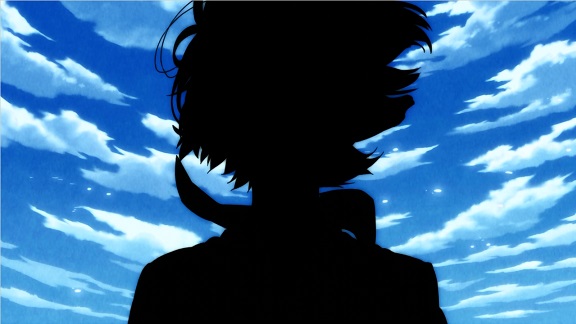
After fifteen seconds of abstract swirls moving against a black background, SanGatsu No Lion opens with the silhouette of the protagonist, Kiriyama Rei, hair blowing wildly in the wind, against a cloudy blue sky. The wind is obviously a metaphor for being restless, uneasy, on edge and we’ll see Rei’s hair blowing around in the wind a couple of times more in the episode.
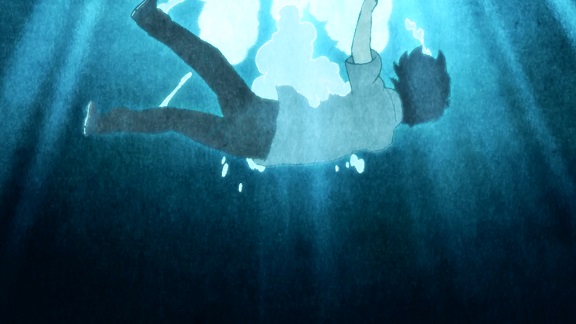
The opening theme starts and it’s one long sequence of Rei drowning, slowly sinking, getting out of the river to struggle through thorn bushes, sinking back into the mud again. There’s a stillness to the drowning sequences that’s in stark contrast to the wind of the pre-opening sequence. The water/drowning metaphor also re-occurs several times in the rest of the episode; air bubbling up in a bottle of ice tea signalling stress.
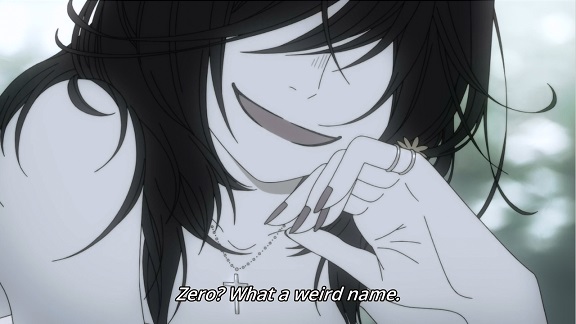
Coming out of the opening, the first thing we see is a close up of a face, a mouth, smiling, but not in a good way. That’s a smile that hurts, in more ways than one. The woman the smile belongs too may be saying hurtful things, but she looks like she’s hurting too. At this point we have no context for this dream or memory of Rei’s. We don’t know who she is or what she is to him, so we have no real idea of why she is saying this to him. Well, I do, but I cheated and read the manga.
As the dream ends and Rei wakes up, the story finally gets underway. Slowly. Almost five minutes are spent on him waking up, getting dressed and traveling to the shogi hall for a match. No dialogue, no narration, just Rei slowly making his way across town. This is rare in anime; normally you’d be right inside the protagonist’s head, but here you actually have to pay attention to Rei’s expressions and body language. And what I see is what I’ve seen with family members struggling with psychological issues or were recuperating from an operation. There’s a deliberateness to how Rei dresses himself in that excerpt above (courtesy of Wave motion Cannon), a way he pulls in his core that speaks to me of being hurt, of remembering pain. You also see how empty his apartment is, the only furniture being a wardrobe and his shogi board. It’s a gorgeous apartment but it feels blindingly cold.
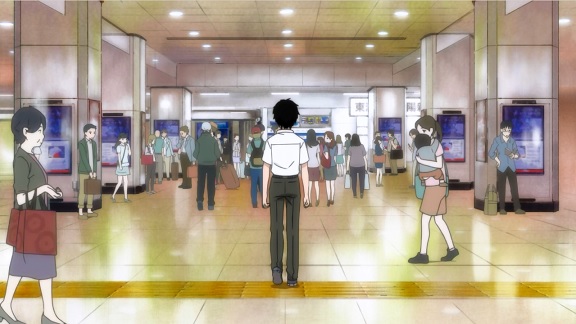
The other thing that struck is how monochrome Rei is compared with his environment, visually setting him apart from everybody else, with his ink dark hair, white shirt and greenish-brown trousers. The camera angles seem to reinforce his isolation, with closeups being mainly showing his back, while longer range shots show him alone in the middle of the screen, or only half in frame, face cut off. It all works pretty well in establishing something is wrong with Rei, if not what.
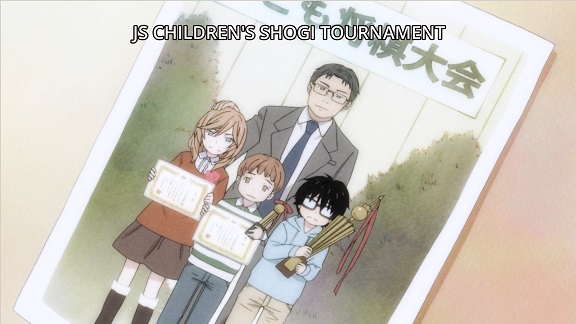
There’s a lot of back story to Rei that’s only hinted at rather than explained in this first episode, as was also the case with the original manga. We get some clue from the dream that opened the episode, some quick flashbacks during his shogi match, but nothing yet ouright explained. Which makes a refreshing change from most of anime, which likes to front load its exposition. So we get the impression that this particular match is a big deal because of who Rei is playing and it is clear they know each other, but just how and why they know each other is only explained much later in the episode. Unexplained remains why the seventeen year old Rei is living on his own, what happened in his past to separate him from his family, or who the woman is he’s having nightmares about.
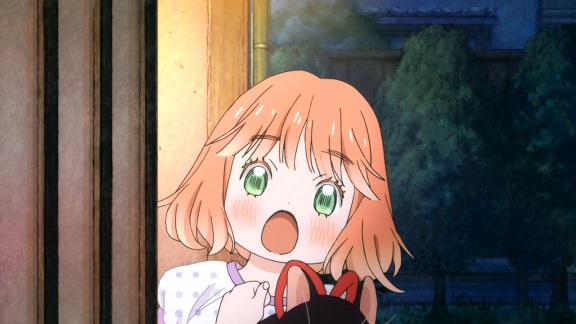
It’s a long and slow introduction to a character and it’s incredibly oppressive, as was the manga when I first read it. Even with just the visuals, with nothing explained, it’s depressive. And then it all changes a third of the way through the episode — but that’s for another post.






